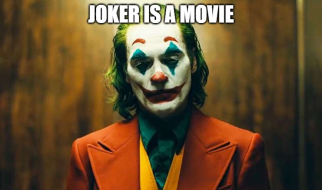Writers refer to development a lot. Character development, plot development. A new word to keep in mind is rather change.
Stakes need to increase at the moment readers start to get ? I won?t say bored, but at the moment they get too comfy. Before they nod off in their armchairs, something ? EXPLODES.
How can writers follow a four act structure, as screenwriters do? Doesn?t structure imply predictability? How can you get something that?s never been done before out of an outline?
Characters change, situations change, worlds change.
A change is interesting. In real life, we fear change because we fear stakes and consequences. In a story world, stakes and consequences make us feel, and we crave changes at every turn. The best writing puts us on the edges of experience, closest to the limits.
It takes a lot of hustle to leave readers feeling satisfied. An effective plot arc is more than rising action, climax, falling action ? or beginning, middle, end.
When broken down, a narrative arc includes hook, complication, conflict, pinch point, midpoint, second pinch point, crisis, climax, denouement. Okay, it?s complicated, but it?s important to make sure you got all the right stuff in all the right places.
And while we?re at it, let?s keep our ideas unique. Are you down?
Here?s the Four Act Structure:
Act One: Setup and Complication
Act One has two turning points: the inciting incident, and the first plot point.
In Act One, introduce your characters and their world ? but don?t forget to create a hook within the first five to ten pages. An effective hook can be a street fight, a sudden death, a unique character strength or flaw, a compelling theme, a whole new world, a new fantastic point of view, a thrilling chase, a wondrous place (yes, these are lyrics from Aladdin), or a hundred thousand things to see. It can be a really good, laugh out loud joke.
The hook is all about reaction, so keep in mind:
Before they can be hooked, readers first need to care about your protagonist.
Why should they? Is your protagonist likable, lovable, or detestable? Shoot for one of these three options, and you should elicit a strong reaction. Your audience will feel something when things go wrong (or right) in those early pages.
Aim to surprise, to achieve the unexpected. If your hook is predictable, can you flip it and do the opposite? Can you alter your tone, inject humor, or amp up the drama? What would happen if you swapped the characters? genders? Don?t shake your head. Ninety-nine percent of the time, something will explode.
Focus on the effect (go for the jugular) and make readers care (make them laugh or bring a tear to their eye, that kind of thing).
An inciting incident changes everything:
The inciting incident is a turning point; remember this is a change. Yes, already. You?ve set up characters and a world in which they live, you?ve hooked your reader, who loves or hates your main character ? now you need to cause some problems. Be a troublemaker. Complicate things.
Readers reengage in the reading experience every time there is a change. The inciting incident confronts the protagonist, whose attempts to resolve the problem leads to a second and more dramatic situation.
The inciting incident isn?t the first plot point.
Bilbo Baggins is enjoying some alone time in his hobbit hole when some Dwarves begin to show up on his doorstep. That?s an inciting incident.
Bilbo just wants to get the Dwarves out of his living room, but after he accepts the job of Burglar, surprising even himself, that?s the first plot point. The dramatic situation after the unexpected party is at a whole new level; he needs to steal back treasure from a dragon.
 The Hobbit
The Hobbit
The first plot point signals the end of the first act. It raises a dramatic question that needs to be answered by the climax. Will Bilbo be a good Burglar? Will he survive the job?
A strong complication forces protagonists to make a choice, and tension soars if they make the wrong one (so have them make the wrong one. Trust me). Emerge from Act One in a worse position than the dramatic situation you started with.
But if the right option is always for the protagonist to make the wrong choice, how do you keep it fresh? What will make your story different from every other?
Think about the dramatic question of your narrative. It should always be unique. An underlying question can be generic: Will she get the girl? Will he solve the mystery? Will they slay the dragon?
The dramatic question of The Hobbit is not generic. It?s: ?Will an unlikely hero who would prefer to be at home in his hobbit hole for tea time overcome his fear and his culturally imbued resistance to adventure and effect historical reparations for the Dwarves, whose cultural heritage has been appropriated by Smaug, and will he escape the ensuing war, the fallout for his heroic action?? The dramatic question of my upcoming novel, Stars and Stopped Clocks, is, ?Do we really deserve a do-over when we fuck up the world, and what are the stars going to do with a time traveling stranger who thinks he?s entitled to a different future??
Use the dramatic question to narrow in on a unique story arc. If your dramatic question sounds as if it?s been done before, revise it, then apply the changes to your story outline. A fresh and brazen dramatic question that takes risks and crosses the line means a bold narrative we?ve never seen before.
Act Two: Conflict and Rising Action
Act Two has two turning points: a pinch and a context shifting midpoint.
?Rising action? is vague literary terminology. The middle of your book can get mucky, messy, tangly and irreversibly snared. Or not. The best rising action happens when protagonists trip over their own swords on their way to fight the dragons.
Your protagonists can?t yet defeat the antagonism they face. And tripping over their own feet, or making a decision that will break some hearts, some eggs, some multi-million dollar Qing-dynasty porcelain ? you get the idea ? is what Act Two is all about.
In Act Two, protagonists need to learn skills, maybe through a mentor or a failed sexual experience, a black eye, a friend ? best of all a team of quirky friends with different strengths and varying senses of humor.
Think about character arc here. Where were the protagonists at the beginning and where are they going? What?s unique about the hero and his or her journey?
Got it? Write it down!
To narrow in on the next major plot point, have a pinch. Pinch points are turning points that turn up the pressure and amp up the threat. The pinch reminds your audience of the danger facing the protagonist and the force of the antagonist?s power.
In the four act structure, there?s one pinch halfway through the second act, and one halfway through the third act.
Maybe the villain kills or kidnaps your love interest. Or blows up a building full of innocent civilians (or if you?re writing the screenplay for Captain America: Civil War, your ?heroes? blow up a building full of innocent civilians. And the protagonists? antagonists are themselves! Bam!). Pinch points refocus the audience?s attention and pivot the story toward the next plot turn.
After the pinch, next comes a reversal at the midpoint of your novel.
The Midpoint:
The midpoint of the novel comes halfway through the rising action, between Act Two and Act Three, right around the middle of your book. And this is a biiiiig change.
I like change! From here on out everything must be different. The midpoint is your whole new world.
This is where if you expect a storyteller to blow up the protagonist in a rail train bomb, it would be here ? although shaking it up and pulling shit like that in Act One instead is a surefire way to keep it fresh!
Sometimes the midpoint is the first time the character tries something to solve the problem, and it actually somewhat works. This shift is what makes Act Three and the resolution in Act Four different from what has come before.
Act Three: Crisis
Act Three consists of a second pinch, and a second plot point.
Act Three is where this whole thing starts to get easy. You?ve set up the problems and introduced changes to the story world and the world of your protagonist?s mind. In Act Three, the hero recovers from the calamities of Acts One and Two, and the villain amps up for a confrontation. Simple.
Time for the second pinch point. Something must go wrong again, to reinforce how bad the situation is. The love interest is kidnapped or killed, the villain shows off a shiny new weapon, the wagon gets fallen off of after sixty days sober. Pinches hurt. Never forget that! Or I?ll pinch you.
Before the climax, there?s a second plot point. This is the ?all is lost? moment or the moment of greatest darkness. It may seem as if the hero has lost. Everything falls apart.
How to keep it fresh? Remember my earlier advice: always do the unexpected. If there?s a predictable way for the second plot point to turn out, or if the climax you?re heading toward seems clear, try the opposite. If it?s obvious the hero will fail here, give ?em a small victory or a feint, a pretend failure. Maybe it seems as if she?s won, but the antagonist will be back. If it seems like the hero has it easy and can prevail, devastate him. Take a limb, knock him unconscious, diagnose him with a brain parasite.
The moment of greatest darkness also hurts.
Remember the complexity of your unique dramatic question? That complexity allows for multiple facets with which to play in order to achieve unpredictability.
Act Four: Climax
Confrontation and falling action.
You already know all about the climax, don?t you? The confrontation happens. All hell breaks loose.
The protagonist may have a new plan or strategy to solve the central problem and finally answer the unique dramatic question of the novel. He or she either succeeds or fails to attain his or her goal.
To keep it fresh, reverse the expectation. To keep it fresh, keep it complex. Every win requires a sacrifice, otherwise what do we learn?
Even more interesting, every loss has an unexpected value.
Give us something to take away from the journey we?ve experienced along with you. The climax is is a confrontation. When it?s complete, when the combatants walk away from the ring, what?s different?
That?s what you?ll cover in the denouement. For real it?s a whole new world this time, the final edition. What does it look like when everything all comes together and the strings are all tied? Don?t skimp on the falling action, because a sudden ending leaves readers unsatisfied. It?s a kind of fizzle out ?the credits are rolling?? moment. The best endings leave us with a smile ? or a frown on our faces.
(Go for the jugular.)
Don?t Fight It: The Importance of Structure
I?ve edited dozens of books. Whenever I?m reading a new manuscript for the first time, and there?s a huge change in the story, whether early, around the 25% mark, or at the midpoint, or at the climax, I always give a cheer and a huge pat on the back to the writer in terms of a comment that reads something like ?A huge change! Holy moly, well done!? Changes are refreshing. Changes make us feel. Changes take us to the limit.
That?s why following a story structure based around drastic changes can be powerful. That first kiss, that fight, that election, that loss, that whole new world ? that?s what we read for, and that?s what a great writer needs to write for!


